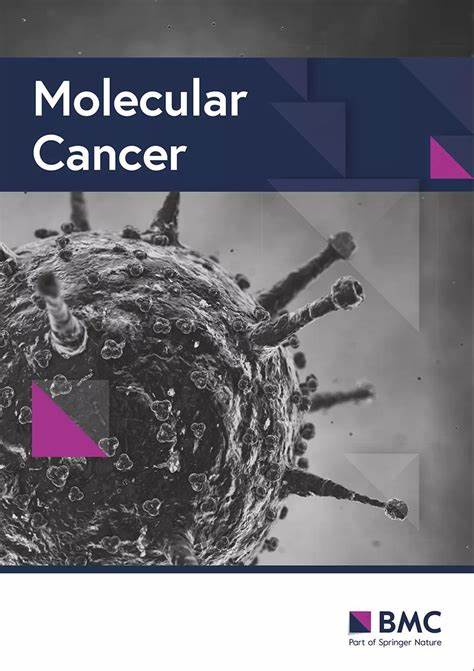Nanobodies targeting the tumor microenvironment and their formulation as nanomedicines
IF 27.7
1区 医学
Q1 BIOCHEMISTRY & MOLECULAR BIOLOGY
引用次数: 0
Abstract
Among the emerging strategies for cancer theranostics, nanomedicines offer significant promise in advancing both patients’ diagnosis and treatment. In combination with nanobodies, nanomedicines can potentially enhance the precision and efficiency of drug or imaging agent delivery, addressing key limitations of current approaches, such as off-target toxicities. The development of nanomedicines will be further accelerated by the creation of smart nanoparticles, and their integration with immunotherapy. Obviously, the success of nano-immunotherapy will depend on a comprehensive understanding of the tumor microenvironment, including the complex interplay of mechanisms that drive cancer-mediated immunosuppression and immune escape. Hence, effective therapeutic targeting of the tumor microenvironment requires modulation of immune cell function, overcoming resistance mechanisms associated with stromal components or the extracellular matrix, and/or direct elimination of cancer cells. Identifying key molecules involved in cancer progression and drug resistance is, therefore, essential for developing effective therapies and diagnostic tools that can predict patient responses to treatment and monitor therapeutic outcomes. Current nanomedicines are being designed with careful consideration of factors such as the choice of carrier (e.g., biocompatibility, controlled cargo release) and targeting moiety. The unique properties of nanobodies make them an effective engineering tool to target biological molecules with high affinity and specificity. In this review, we focus on the latest applications of nanobodies for targeting various components of the tumor microenvironment for diagnostic and therapeutic purposes. We also explore the main types of nanoparticles used as a carrier for cancer immunotherapies, as well as the strategies for formulating nanoparticle-nanobody conjugates. Finally, we highlight how nanobody-nanoparticle formulations can enhance current nanomedicines.靶向肿瘤微环境的纳米体及其作为纳米药物的配方
在新兴的癌症治疗策略中,纳米药物在推进患者的诊断和治疗方面提供了重大的希望。与纳米体结合,纳米药物可以潜在地提高药物或显像剂递送的精度和效率,解决当前方法的关键限制,例如脱靶毒性。智能纳米粒子的创造以及它们与免疫疗法的结合将进一步加速纳米药物的发展。显然,纳米免疫疗法的成功将取决于对肿瘤微环境的全面了解,包括驱动癌症介导的免疫抑制和免疫逃逸机制的复杂相互作用。因此,肿瘤微环境的有效靶向治疗需要调节免疫细胞功能,克服与基质成分或细胞外基质相关的耐药机制,和/或直接消除癌细胞。因此,确定参与癌症进展和耐药性的关键分子对于开发有效的治疗方法和诊断工具至关重要,这些工具可以预测患者对治疗的反应并监测治疗结果。目前的纳米药物在设计时仔细考虑了诸如载体的选择(例如,生物相容性、受控的货物释放)和靶向部分等因素。纳米体的独特性质使其成为具有高亲和力和特异性的靶向生物分子的有效工程工具。在本文中,我们重点介绍了纳米体靶向肿瘤微环境的各种成分在诊断和治疗方面的最新应用。我们还探讨了用于癌症免疫治疗载体的纳米颗粒的主要类型,以及制定纳米颗粒-纳米体偶联物的策略。最后,我们强调了纳米体-纳米颗粒配方如何增强当前的纳米药物。
本文章由计算机程序翻译,如有差异,请以英文原文为准。
求助全文
约1分钟内获得全文
求助全文
来源期刊

Molecular Cancer
医学-生化与分子生物学
CiteScore
54.90
自引率
2.70%
发文量
224
审稿时长
2 months
期刊介绍:
Molecular Cancer is a platform that encourages the exchange of ideas and discoveries in the field of cancer research, particularly focusing on the molecular aspects. Our goal is to facilitate discussions and provide insights into various areas of cancer and related biomedical science. We welcome articles from basic, translational, and clinical research that contribute to the advancement of understanding, prevention, diagnosis, and treatment of cancer.
The scope of topics covered in Molecular Cancer is diverse and inclusive. These include, but are not limited to, cell and tumor biology, angiogenesis, utilizing animal models, understanding metastasis, exploring cancer antigens and the immune response, investigating cellular signaling and molecular biology, examining epidemiology, genetic and molecular profiling of cancer, identifying molecular targets, studying cancer stem cells, exploring DNA damage and repair mechanisms, analyzing cell cycle regulation, investigating apoptosis, exploring molecular virology, and evaluating vaccine and antibody-based cancer therapies.
Molecular Cancer serves as an important platform for sharing exciting discoveries in cancer-related research. It offers an unparalleled opportunity to communicate information to both specialists and the general public. The online presence of Molecular Cancer enables immediate publication of accepted articles and facilitates the presentation of large datasets and supplementary information. This ensures that new research is efficiently and rapidly disseminated to the scientific community.
 求助内容:
求助内容: 应助结果提醒方式:
应助结果提醒方式:


